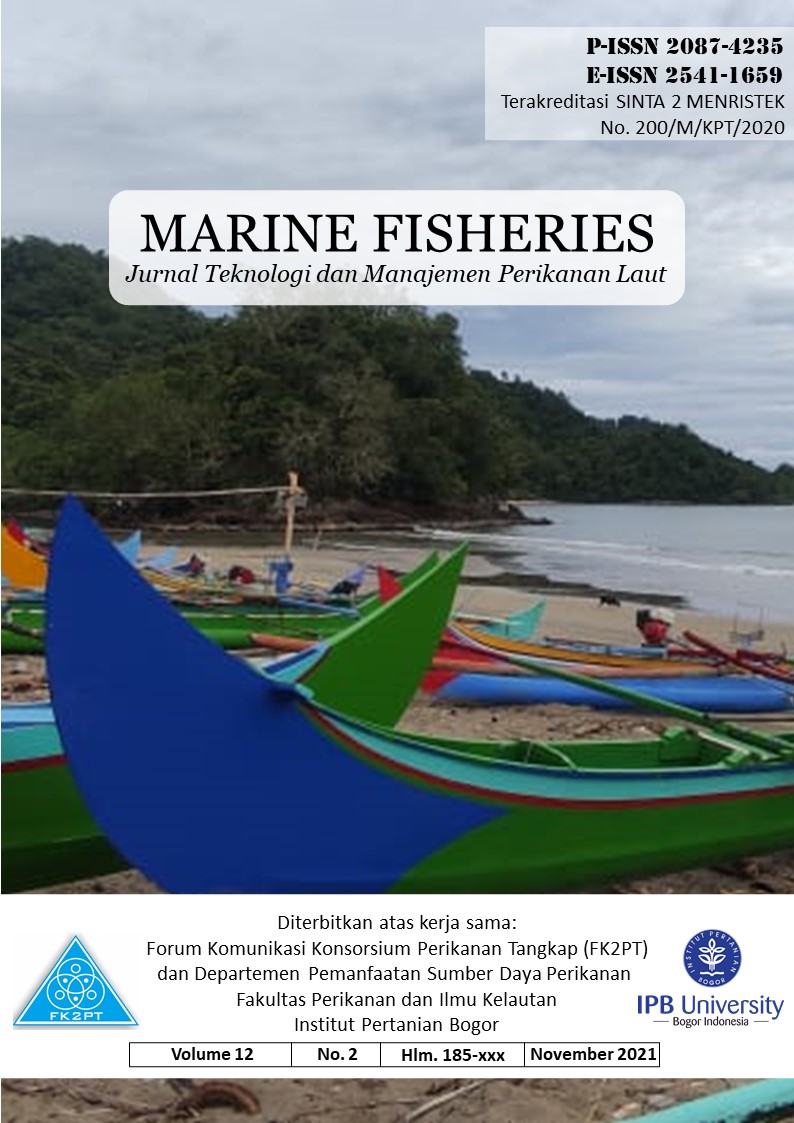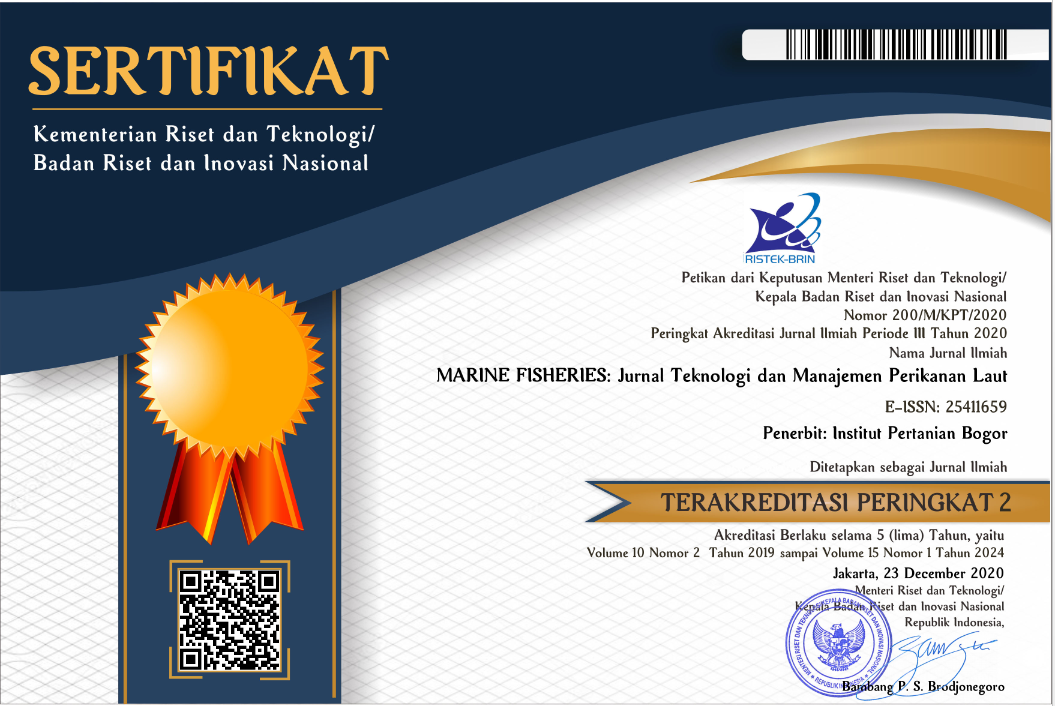ANALYSIS ON AMOUNT OF CARGO AND FIHERS’S INCOME IN 3 GT FRP FISHING BOAT WITH DIFERENT LIGHT WEIGHT TON (LWT) IN CILACAP
Abstract
ABSTRACT
The Ministry of Maritime Affairs and Fisheries (KKP) through the Directorate General of Capture Fisheries (DJPT) provides assistance in the form of fishing vessels to fishermen. However, the aid vessels intended for Cilacap had an empty weight that was heavier when compared to other vessels that had the same main dimensions of the vessel. The vessel that have heavier empty weights will cause poor motion when operating and reduced capacity to accommodate the vessel. The purpose of this research are to calculate the difference in the weights of aid vessel and fishing vessel, formulate the maximum weight of cargo that can be accommodated by aid vessel and fishing vessel through TPC calculations, and estimate the level of income of fishermen per trip with the maximum weight set. The research was conducted on aid vessel and 3 GT sized fishermen vessel made of fiberglass which have different vessel weights. Based on the results of the research, it was found that the empty weight of the aid vessel was 277,1847 kg and the fishermen vessel was 95,4165 kg with the difference between the two vessels 181,7682 kg. The maximum cargo weight that can be accommodated by the aid vessel at the highest draft is 3.98 tons. The maximum cargo weight that can be accommodated by fishing vessel at the highest draft is 5.98 tons. The estimated revenue of the aid vessel in the condition of a maximum load of Rp. 29,371,620 and the estimated income of fishing vessel in the condition of a maximum load of Rp. 46,081,620.
Keywords: draft, fiberglass, income, main dimensions, weight
Downloads
Author(s) who published in this journal agree to following terms:
- Author(s) must understand and agree that the copyright script in published owned by the Marine Fisheries Journal. The copyright includes reproducing and selling the manuscript to all parties.
- Everyone can cite every manuscript published in Marine Fisheries for educational purposes, with the author's name and the Marine Fisheries Journal on reference.










